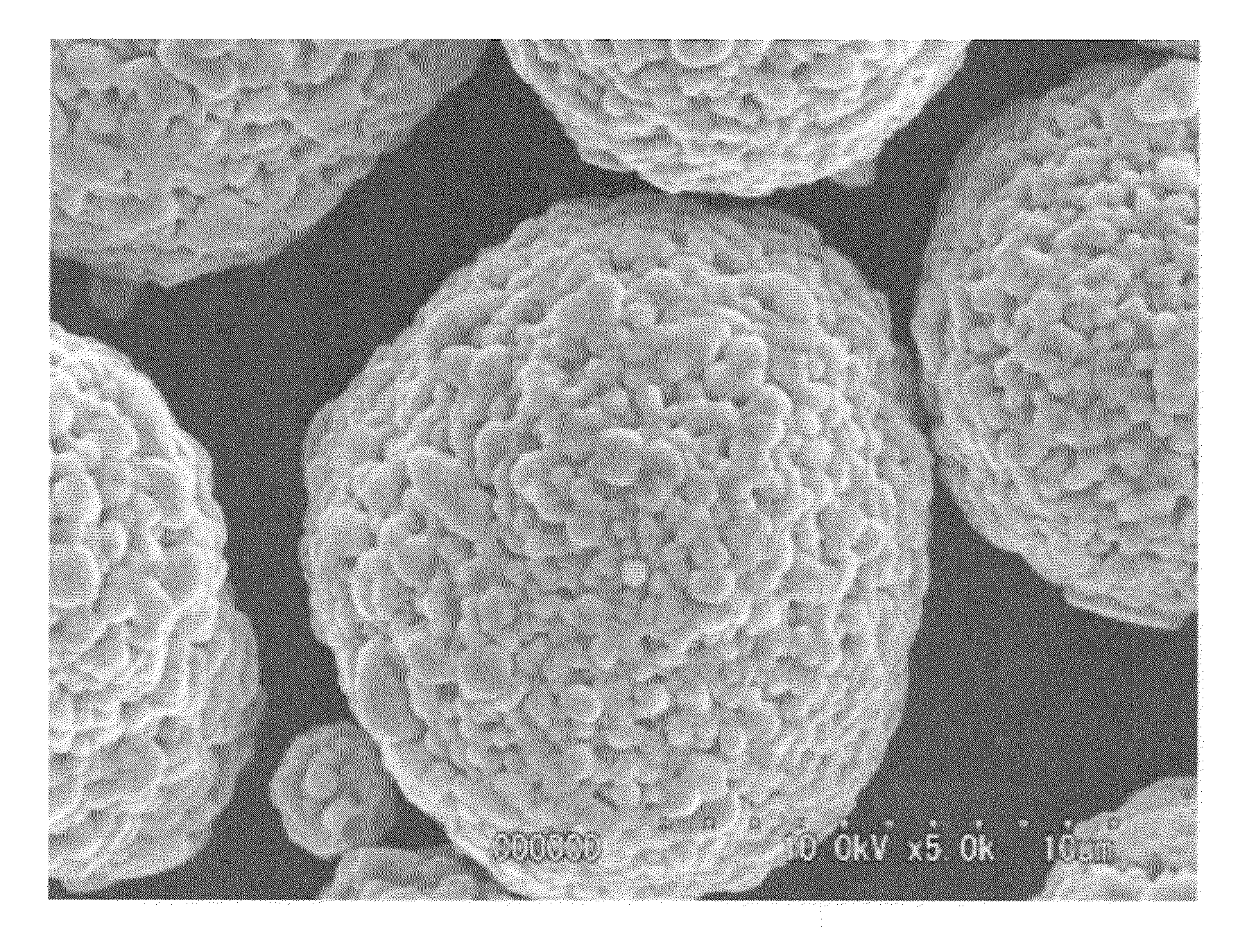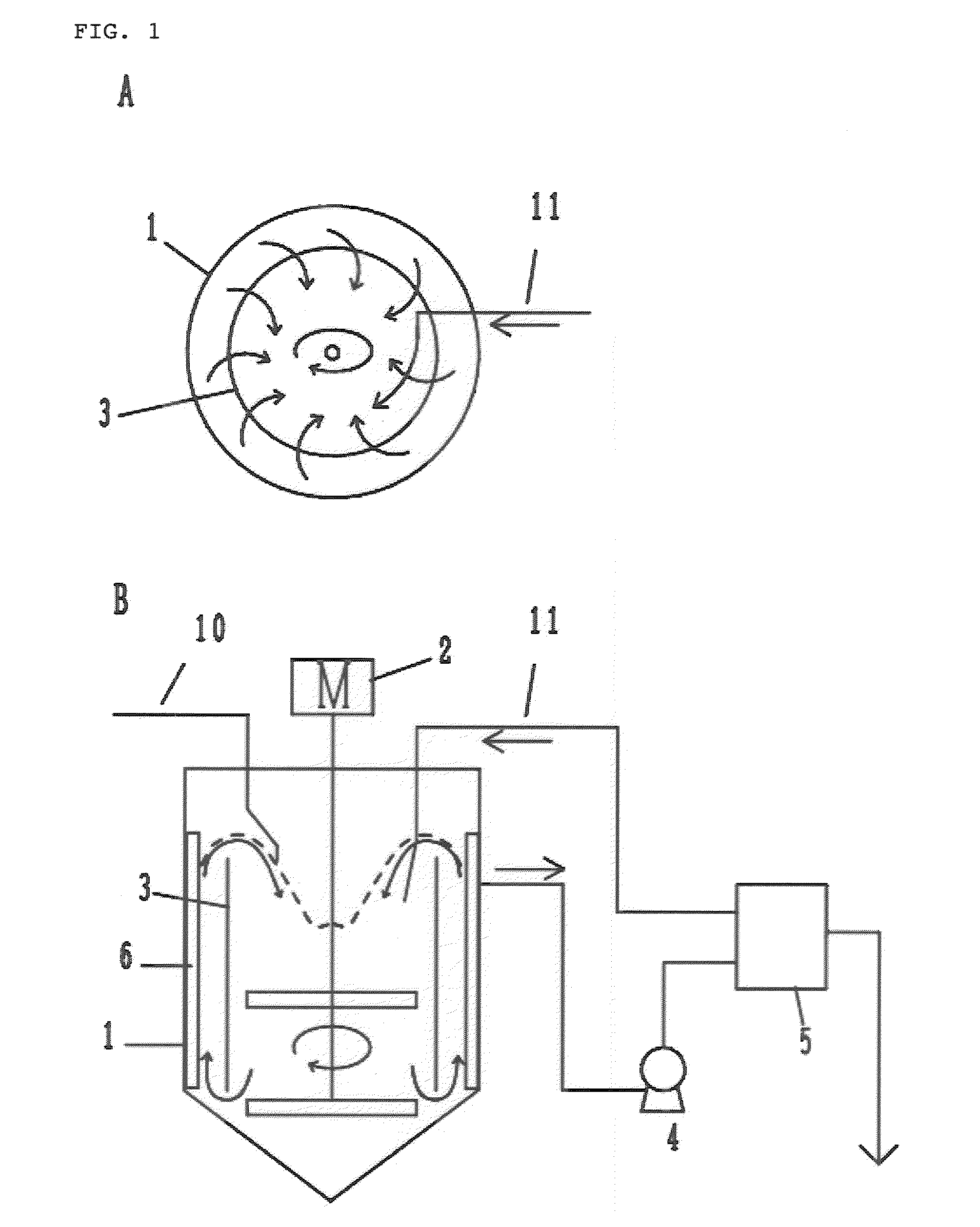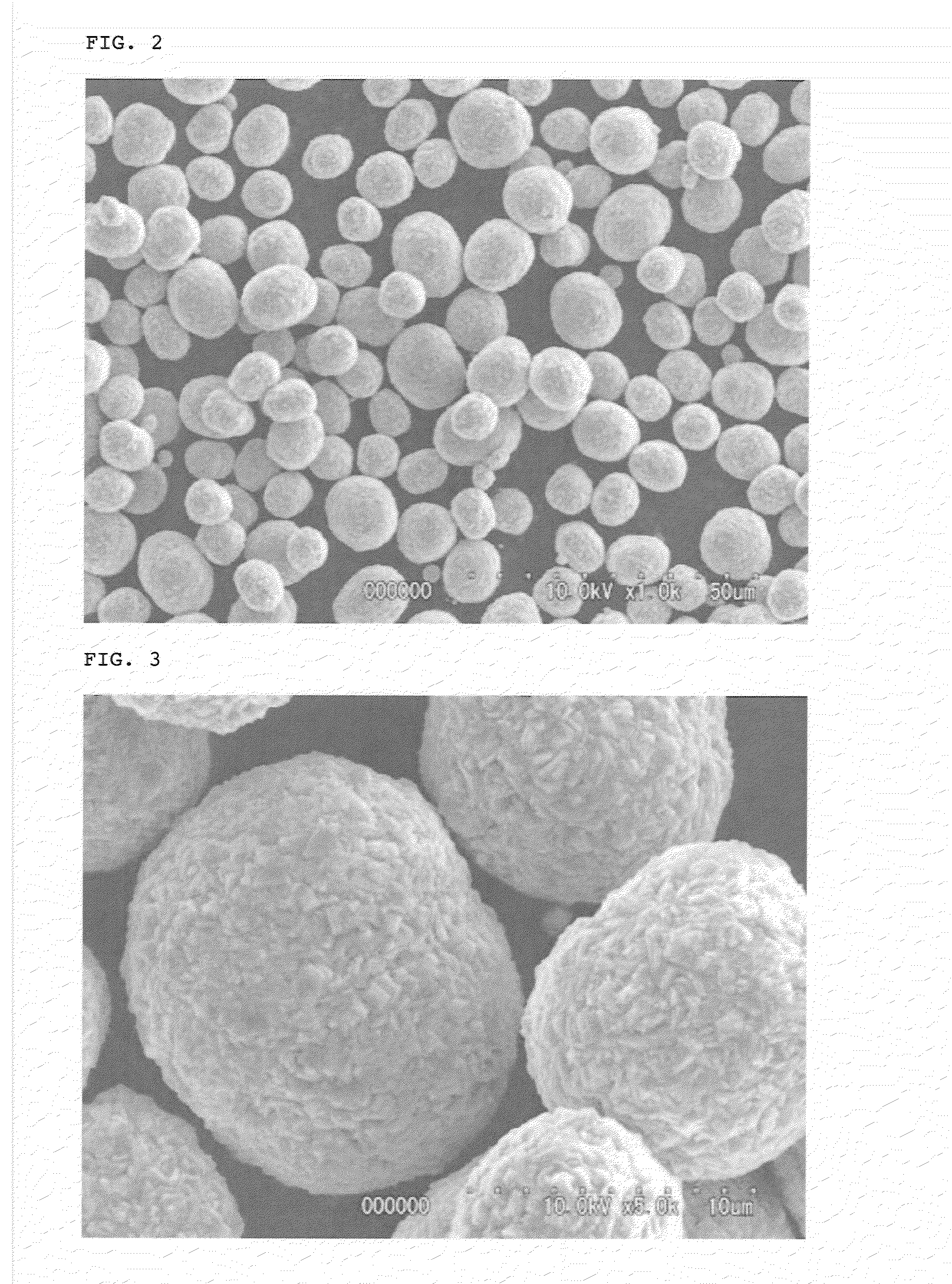Nickel-cobalt-maganese-based compound particles and process for producing the nickel-cobalt-manganese-based compound particles, lithium composite oxide particles and process for producing the lithium composite oxide particles, and non-aqueous electrolyte secondary battery
- Summary
- Abstract
- Description
- Claims
- Application Information
AI Technical Summary
Benefits of technology
Problems solved by technology
Method used
Image
Examples
example 1
[0149]A reactor having an effective capacity of 10 L equipped with a draft tube, a baffle and a vane-type stirrer was filled with 8 L of ion-exchanged water. While fully stirring, a temperature within the reactor was adjusted to 40° C., and then a 4 mol / L sodium hydroxide aqueous solution was dropped into the reactor such that the pH value of the solution in the reactor was adjusted to 12.0. In addition, a 4 mol / L ammonia aqueous solution was dropped into the reactor in such an amount that the ammonia concentration of the reaction solution in the reactor was adjusted to 0.80 mol / L. Then, a mixed aqueous solution comprising cobalt sulfate, nickel sulfate and manganese sulfate at a concentration of 1.5 mol / L for each salt was continuously supplied to the reactor at an average feed rate of 0.08 mol / (L·hr). At the same time, a 4 mol / L sodium hydroxide aqueous solution and a 4 mol / L ammonia aqueous solution were continuously supplied to the reactor such that the pH value of the reaction ...
examples 2 to 8
[0151]The same procedure as defined in Example 1 was conducted except that the composition, reaction temperature, pH and reaction concentrations were variously changed, thereby obtaining nickel-cobalt-manganese-based compound particles.
[0152]The production conditions used above are shown in Table 1, and various properties of the thus obtained nickel-cobalt-manganese-based compound particles are shown in Table 2.
example 9
[0159]The nickel-cobalt-manganese-based compound particles obtained in Example 1 and a lithium compound were intimately mixed with each other in such an amount that the molar ratio of lithium / (cobalt+nickel+manganese) was 1.05, and the resulting mixed particles were calcined in an atmospheric air at 950° C. for 10 hr, thereby obtaining lithium composite oxide particles.
[0160]As a result, it was confirmed that the thus obtained lithium composite oxide particles had such a composition that the molar ratio (mol %) of Ni:Co:Mn therein was 48.85:20.29:30.86, and the molar ratio of Li to a total amount of nickel, cobalt and manganese [lithium / (nickel+cobalt+manganese)] was 1.05. Also, as a result of subjecting the thus obtained lithium composite oxide particles to X-ray diffraction analysis, it was confirmed that the obtained particles were constituted from only a layered lithium compound single phase without any impurity phase. Further, it was confirmed that the lithium composite oxide p...
PUM
| Property | Measurement | Unit |
|---|---|---|
| Temperature | aaaaa | aaaaa |
| Temperature | aaaaa | aaaaa |
| Temperature | aaaaa | aaaaa |
Abstract
Description
Claims
Application Information
 Login to View More
Login to View More - R&D
- Intellectual Property
- Life Sciences
- Materials
- Tech Scout
- Unparalleled Data Quality
- Higher Quality Content
- 60% Fewer Hallucinations
Browse by: Latest US Patents, China's latest patents, Technical Efficacy Thesaurus, Application Domain, Technology Topic, Popular Technical Reports.
© 2025 PatSnap. All rights reserved.Legal|Privacy policy|Modern Slavery Act Transparency Statement|Sitemap|About US| Contact US: help@patsnap.com



